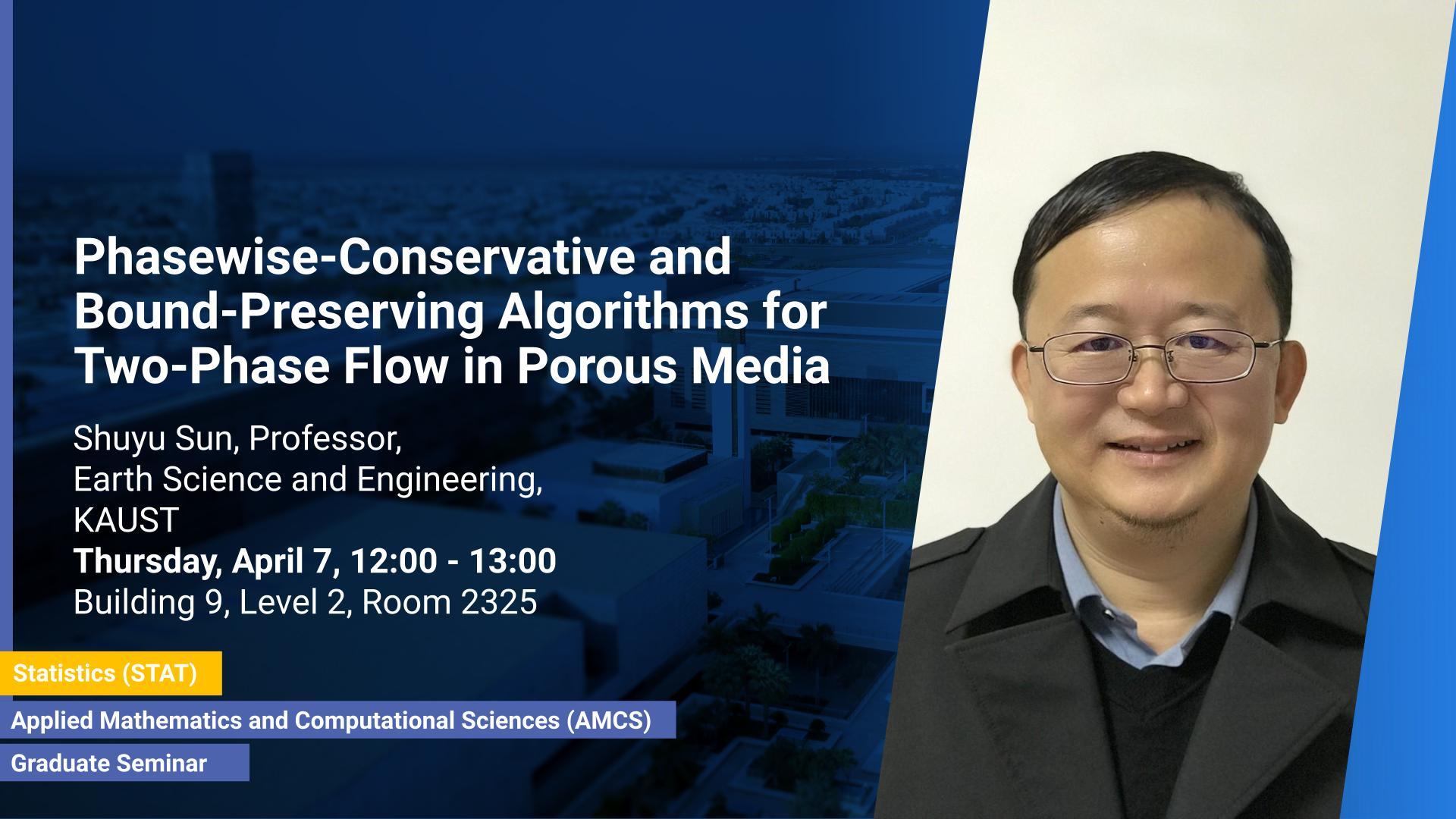Event Start
Event End
Location
Abstract
Two or multiple phases in fluid mixture commonly occur in petroleum industry, where oil, gas and water are often produced and transported together. Petroleum reservoir engineers spent great efforts in drainage problems arising from the development and production of oil and gas reservoirs so as to obtain a high economic recovery, by developing, conducting, and interpolating the simulation of subsurface flows of reservoir fluids, including water, hydrocarbon, CO2, H2S for example in porous geological formation. Meanwhile, environmental scientists use subsurface flow and transport models to investigate and compare for example various schemes to inject and store CO2 in subsurface geological formations, such as depleted reservoirs and deep saline aquifers. One basic requirement for accurate modeling and simulation of multiphase flow is to have the predicted physical quantities sit within a physically meaningful range. For example, the predicated saturation should sit between 0 and 1 while the predicated molar concentration should sit between 0 and the maximum value allowed by the equation of state. Unfortunately, popular simulation methods used in the industries do not preserve physical bounds. A commonly used fix to this problem is to simply apply a cut-off operator (say, to the computed saturation) at each time step, i.e., to set the saturation to be zero whenever it becomes negative, and to set it to one whenever it becomes larger than one. However, this cut-off practice does not only destroy the local mass conservation, but it also damages the global mass conservation, which seriously ruins the numerical accuracy and physical interpretability of the simulation results.
In this talk we present our work on both fully implicit and semi-implicit algorithms for two-phase in porous media with capillary pressure. Our proposed algorithms are locally mass conservative for all phases. They are able to accurately reproduce the discontinuity of saturation due to different capillary pressure functions, and they enjoy the merit that the total velocity is continuous in the normal direction. Moreover, the new schemes are unbiased with regard to the phases and the saturations of all phases are bounds-preserving (unconditionally for the fully implicit schemes and conditionally for the semi-implicit algorithms). We also present some interesting examples to demonstrate the efficiency and robustness of the new algorithms. The semi-implicit algorithms are based on our novel splitting of variables, and the fully implicit algorithms are based on the two nonlinear preconditioner of active-set reduced-space method and nonlinear elimination, as well as the linear preconditioner of overlapping additive Schwarz type domain decomposition. The semi-implicit part of this presentation is based on our joint work with Huangxin Chen (Xiamen University), Jisheng Kou (Shaoxing University), Xiaolin Fan (Guizhou Normal University), and Tao Zhang (KAUST), and the fully implicit part is based on our joint work with Haijian Yang (Hunan University), Chao Yang (Beijing University), and Yiteng Li (KAUST).
Brief Biography
Shuyu Sun is a full professor at King Abdullah University of Science and Technology (KAUST), and he leads the Computational Transport Phenomena Laboratory (CTPL) at KAUST. He has been a founding faculty member of KAUST since 2009. He holds or held a number of adjunct faculty positions across the world, including Adjunct Faculty in Clemson University, University of Nevada at Las Vegas, Xi’an Jiao Tong University, China University of Petroleum, and China University of Geosciences. Before joining KAUST, he served as an (tenure-tracked) Assistant Professor of Mathematical Sciences at Clemson University in the United States. He obtained his Ph.D. degree in computational and applied mathematics from The University of Texas at Austin. His research includes the modeling and simulation of porous media flow at Darcy scales, pore scales and molecular scales. Dr. Sun has published 400+ articles or book chapters, including 280+ refereed journal articles. Based on Google Scholar, his total citation number (as of March 2022) is 6745 with a h-index of 40. He has three papers recognized as “Highly Cited in Field in Web of Science”, and recently he published a book with Elsevier entitled “Reservoir Simulation: Machine Learning and Modeling”. Currently he is the founding president of InterPore (International Society for Porous Media) Saudi Chapter.
